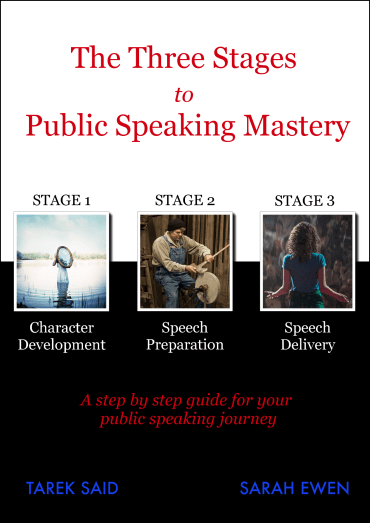5 TIPS TO PRACTICE YOUR SPEECH MORE EFFECTIVELY
I linked in this article a great video by Ted Ed about how to practice anything effectively. I summarised the contents of the video and added notes on how we can apply the lessons in our public speaking practice. They are
1. Target areas you are weak at
2. Minimise potential distractions
3. Start out slowly
4. Break up your practicing sessions
5. Practice in your mind
1. Target areas you are weak at
It is very tempting to practice things we are strong at. It is easier and it makes us feel that we have achieved something. But in reality, practicing things we are already good at is not the best use of our time.
To get the most out of our practice we need to target areas we are weak at. It is more difficult but it give us a lot more return.
So what are the most important areas to practice in a speech?
Introduction: Many people put all their effort into practicing the body of their speeches and put little to no effort in practicing the introduction. But practicing the introduction is of paramount importance because:
- The introduction is where the audience decide whether or not they want to listen to you. A weak introduction is a sure way to switch the audience off.
- It helps you with calming down your nerves. We are most nervous in the first few seconds of our speech. When we put effort into practicing these first few sentences, it helps us a lot in
- It charges your entire delivery. A strong start gives you momentum that can last for your entire speech.
Transitions: Another overlooked item of speaking is transitioning from one point to another. Practice transition to help you have a smoother delivery.
Difficult words or sentences: If their is a word in your speech that you find difficult to pronounce, it is important to work extra hard on practicing that word. A lot of inexperienced speakers feel embarrassed when they have to say a difficult word that they haven’t practiced it and they mumble it hoping that no one had heard them.
2. Minimise potential distractions
Distraction can significantly lower the quality of our practice. According to the video researchers observed 260 students studying. They found that on average these student were able to stay on task for only six minutes due to distractions from Facebook, laptops, etc.
When practicing your speech you want to avoid distractions as much as possible. Turn off your computer and your phone notifications and make sure you have some distraction free practice time.
3. Start out slowly
Many people get frustrated when they can’t remember their entire speech from the first go or when they can’t pronounce a particular word or sentence. They think they should be able to master their entire speech straightaway and they feel stressed when they can’t.
The thing to remember is that mastering anything new, be it a dance move, a musical piece or a speech, takes time.
It is better to start out slowly and break the speech down into smaller bits.
You can work on one paragraph at a time, once you master it move on to the next one instead of trying to practice the entire speech straightaway.
Another way is to try to practice one task at a time. You may want to start by focusing on memorising the speech, once you do so then on you can practice vocal variety, then on your body language and so on.
4. Break up your practicing sessions
According to the video, studies have shown that many top athletes, musicians and dancers, divide their practice time into multiple daily sessions of limited durations.
A major mistake in practicing your speech is to leave it to the last day and practice ten hours non stop. It is better to practice 1 hour a day for 10 days than to practice 10 hours in one day. Although the number of practicing hours is the same. The smaller sessions provide way better quality.
5. Practice in your mind
According to the video, 144 basketball players were divided into two groups. One group was asked to physically practice one handed free throws while the other group was asked to mentally practice them. When the groups were then tested at the end of the experiment the intermediate and experienced players from both groups had improved by nearly the same amount!
Visualising yourself delivering a speech allows you to live the experience in your mind. When you master the art of visualisation, you can literally experience the physical symptoms of fear – increased heart rate, sweaty palms and even dry mouth.
To visualise delivering a speech effectively start by imagining yourself standing in front of an audience. Try to visualise the room, the number of people, the time of the day and the facial expressions of the audience.
The more details you can imagine the more realistic your experience will be.
If it is challenging to visualise an audience, one option is to view images of audiences online and imagine yourself delivering a speech to them.
Harnessing the power of visualisation is very useful when practicing any speech.

